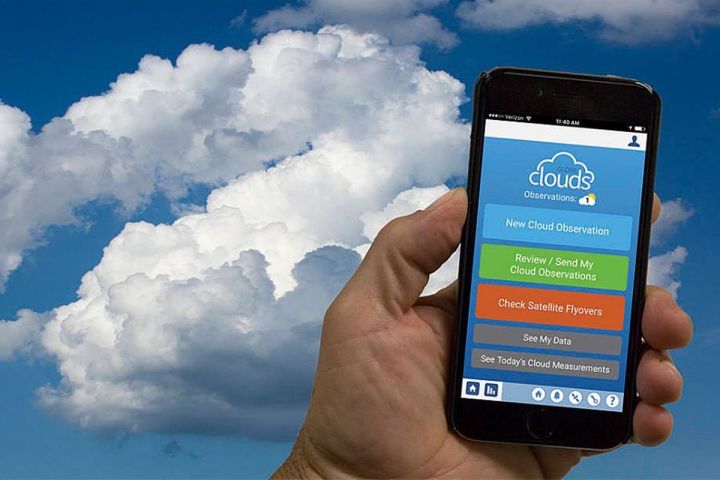
From now through April 15, NASA is enlisting citizen scientists and amateur cloud-gazers around the world to help validate satellite data on cloud formations. Anyone who wants to participate can simply point their phone at the sky and snap a photo.
The initiative is part of the GLOBE (Global Learning and Observations to Benefit the Environment) program, an international education effort to encourage students and anyone interested in science to participate in data collection.
Marilé Colón Robles from the Langley Research Center explained that the data helps scientists classify cloud formations in satellite images. “The GLOBE Program is offering this challenge to show people how important it is to NASA to have citizen scientist observations; observations from the ground up,” she said. “We’re going from winter to spring, so the types of storms will change, which will also change the types of clouds.”
If you’d like to be a part of it, you can download the GLOBE Observer app from its website. Participants can submit up to ten cloud photos per day, and those with the most observations will be recognized in a NASA video.
NASA is asking for on-the-ground observations now because data is coming in from a new CERES (Clouds and the Earth’s Radiant Energy System) instrument. CERES, which launched into orbit in November, uses a variety of sensors to monitor the Earth below.
Even with advanced technology, it can sometimes be difficult to tell the difference between wispy cirrus clouds and patches of snow on the ground, for example. “Looking at what an observer recorded as clouds and looking at their surface observations really helps us better understand the images that were matched from the satellite,” said Colón Robles.
NASA recommends that you wait 10-15 minutes between observations for atmospheric changes. You can use the app to see when satellites are overhead and when your photos might be most useful.
The website also has some tips for photographers, as well as some basic information on the different cloud types. Colón Robles noted that you don’t need to be an atmospheric scientist or avid photographer to participate, NASA is interested in all the data they can collect. “Just go outside,” she said.


